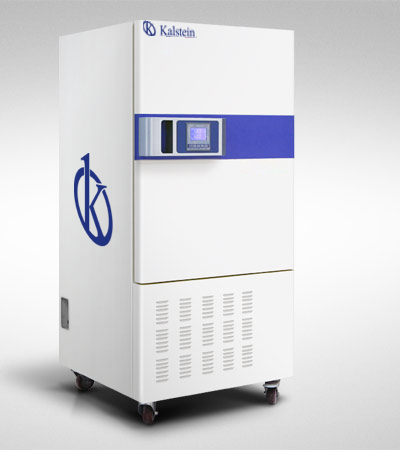The incubator is a team that uses various means of heat transfer and environmental control, to obtain conditions under which specialized laboratory procedures can be performed. In general, they have a system of electrical resistors that are controlled by devices such as thermostats or microprocessed controls. As for heat transfer systems, incubators basically use natural or forced conduction and convection.
Thermal Conduction
In thermal conduction incubators, the electrical resistor assembly directly transfers heat to the chamber walls, where the samples are incubated. The resistors are a high temperature region, while the chamber is a lower temperature region. The transfer of thermal energy always occurs from the region of highest temperature to the region of lowest temperature.
Thermal convection
In incubators that operate by thermal convection, the heat generated by the resistance system is transferred to a fluid – air – that circulates in the incubation chamber, transferring the heat to the samples; the efficiency of this process depends on the flow patterns of it. Air generally enters the incubator from the bottom and is heated in a compartment, from which it flows into the incubator chamber, following uniform flow patterns, and finally exits to the outside via a duct located at the top of the incubator.
What do incubators require for their operation?
Incubators require the following conditions for their operation:
- An electrical attack dimensioned according to the electrical standards used in the country. The electrical outlet feeding the incubator should not be more than 1,5 m from the site selected for the incubator installation. The electrical outlet should normally supply a voltage of 120 V, 60 Hz or 220-240 V, 50/60 Hz and have its respective grounding.
- A free space at the sides of the incubator and also at the rear of the equipment, in order to allow the passage of cables and ventilation required by the incubator for normal operation. This space is estimated between 5 and 10 cm.
- A place in the laboratory where temperature variation is minimal.
- A shelf or meson, firm and level, capable of supporting the weight of the incubator. The weight of a three-shelf incubator is estimated at between 60 and 80 kg.
- Pressure regulators, hoses and couplings, for incubators using carbon dioxide (CO2). In addition, anchorages to secure the high pressure cylinder containing CO2.
Incubator maintenance and use routines
The following are general operating and maintenance routines that may be required by an incubator. The specific procedures should be performed according to the recommendations of each manufacturer. Recommendations for use
- Do not use an incubator in the presence of flammable or combustible materials, because inside the equipment there are components that in operation could act as sources of ignition.
- Avoid spilling acid solutions inside the incubator. These deteriorate the internal materials of the incubation chamber. Care should be taken to handle substances whose pH is neutral as far as possible. Avoid incubating substances that generate corrosive fumes.
- Avoid placing containers on the bottom cover that protects the resistive heating elements.
- Use personal protective elements when using the incubator: safety glasses, gloves, tweezers for placing and removing containers.
- Avoid standing in front of an incubator with the door open. Some substances emit fumes or fumes that are not recommended for breathing.
- Calibrate the incubator at the installation site to check its uniformity and stability.
- Check the operating temperature of the incubator in morning and evening hours, with certified instruments: thermometer, thermo-even, etc.
- Record each non-conformity detected in the incubator log. Explain whether corrective actions were taken.
- Verify that the temperature of the incubator does not vary by more than one degree Celsius (+/- 1 °C).
- Add a non-volatile microbial inhibitory agent if a container of water is required to be installed inside the incubator to maintain a certain amount of moisture.
Kalstein offers you an excellent range of incubators. That’s why we invite you to take a look at one of our incubators available HERE

